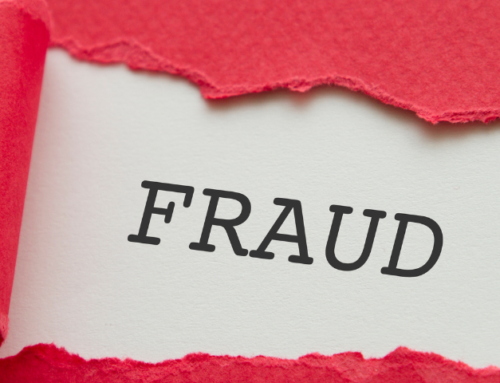The challenging economic environment in the UK is leaving small to medium-sized enterprises (SMEs) open to significant levels of uninsured risk. Research of more than 500 SMEs1 found that:
One-third (32%) of businesses don’t take inflation or supply chain issues into consideration when reviewing how much to insure their business for.
10% of SMEs – more than half a million businesses – wouldn’t survive if they had to pay up to £10,000 towards a claim that wasn’t fully covered by insurance.2
19% of businesses haven’t reviewed how long it would take to reinstate their business within the last two years.
Three in ten (31%) businesses don’t have Employers Liability insurance, a legal requirement.
Inflation, supply chain disruption and labour shortages aren’t just creating challenging business conditions but are also putting businesses at increased risk of becoming underinsured.
The high rate of inflation means that the level of insurance cover protecting a business’ buildings and physical assets such as stock or machinery, is likely to need updating in order to keep pace with the increased costs of replacing. However, 28% of SMEs haven’t reviewed their sums insured in the last year.
Business interrupted
Supply chain disruption, Brexit, the conflict in Ukraine and labour shortages are all impacting the length of time it’ll take for a business to be able to resume normal operations in the event of a significant claim such as a flood or fire. Against this backdrop, one in five businesses (19%) haven’t reviewed the amount of time they’d need their business interruption cover in place for within the last two years.
One question businesses struggle with is to predict how long they could be out of operation for in the event of major loss. A recent analysis of large claims (more than £100,000) that were settled by Aviva between 2018 – 2021 found that the average lifecycle to close a claim was 385 days. However, SMEs said, on average, it would take just under six months 3 for their business to be able to return to normal operations following a major loss such as a fire or flood. This is a significant gap which, in the event of a large claim, could see SMEs face a shortfall in cover – exposing them to material levels of financial risk.
Basic cover neglected
Aviva’s research also revealed that large numbers of businesses are going without essential – and in some cases, legally required – forms of insurance. For example, 69% of businesses said they have Employers Liability (EL) insurance – a mandatory cover for any business that employs people. Although some small businesses may not employ anyone, 83% of both small (10 – 49 employees) and medium (50 – 250 employees) sized businesses said they have EL, leaving potentially 17% of small and medium sized businesses without any form of this mandatory cover.
Despite this, 91% of businesses are “confident they have the right cover in place”. This underscores the importance for SMEs to regularly speak with their broker to make sure that they have cover in place to protect them from the key risks they face.
The challenging economic backdrop will undoubtedly see businesses look to cut unnecessary costs. While this is understood, the uncertainty of the last several years highlights the need for businesses to be protected against the unexpected. But just three in ten (31%) businesses have insured themselves for business interruption and just one in five businesses have purchased Cyber insurance – one of business leaders’ ten biggest risks, according to Aviva’s most recent Risk Insights Report.
Jason Chambers, Head of Underwriting Automation at Aviva, said:
“SMEs have faced a tumultuous couple of years and have come through the challenges posed by Covid, only to face some of the most challenging economic headwinds of the last few decades.
SMEs will obviously be paying close attention to their expenditure as a result. But cutting corners on insurance leaves them exposed to considerable risk – we estimate that 50% of UK businesses are underinsured to some degree and 45% of policies with buildings have at least one premises suspected to be underinsured by 20%3. In the event of a claim, this could really impact a business’ ability to stay afloat.
Our research shows that many SMEs are in the dark about how inflation, supply chain disruption and other macroeconomic and global issues can impact their own business in the event they have to make a claim. We want to highlight the risk of underinsurance that SMEs face and encourage them to speak with their broker, who can advise on the necessary covers and levels of insurance to help protect SMEs through this period of uncertainty.
But we’re not just talking about it – our underwriters are working with brokers to proactively identify which of their SMEs customers are at risk of underinsurance. Aviva’s Commercial Insurance Tool (CIT) uses data analytics to help identify where a business may be underinsured, potential gaps in cover and recommend personalised insights to help SMEs make informed decisions about their insurance cover. This will protect SMEs from the effects of fast-rising inflation, supply chain disruption and other uncertainties.”
Support is available
It’s clear that we need to work together to help you understand how the challenging market conditions could be impacting your cover.
If you are concerned about how this affects you and your business and would like support in assessing your needs, we are here to help. Please do get in touch for confidential advice and guidance.
1 Figures relate to a survey of 502 micro, small and medium sized business, carried out by YouGov on behalf of Aviva in September 2022.
3 Based on Aviva’s SME modelled data, excluding Fleet
This article was adapted from an article by Aviva which can be found here.





